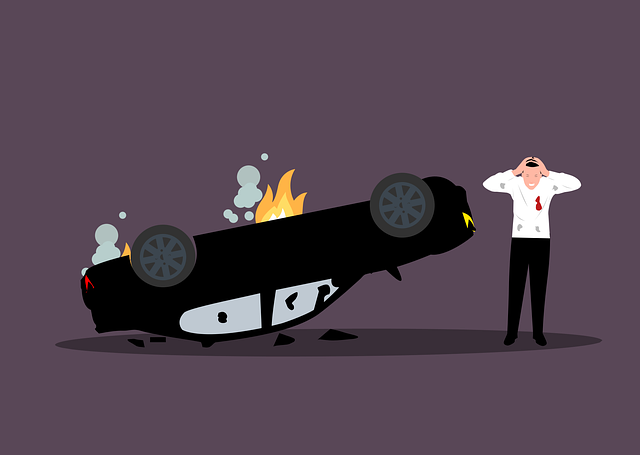Bicycle Accident Head Injury: Navigating Claims Effortlessly

Bicycle accident head injuries pose significant challenges, including medical bills, disabilities, a…….
In the ever-growing discourse on road safety, bicycle accidents and their associated head injuries have emerged as critical areas of concern. This comprehensive article delves into the multifaceted world of bicycle accident head injury (BAHI), exploring its causes, consequences, global reach, and the innovative solutions shaping its prevention and treatment. From technological advancements to policy interventions, we aim to equip readers with a holistic understanding of BAHI, highlighting its significance in both personal and public spheres.
Definition: Bicycle Accident Head Injury refers to any traumatic brain injury (TBI) sustained by a cyclist involved in a collision or accident while riding a bicycle. This includes a wide range of injuries, from mild concussions to severe cognitive impairments.
Core Components:
Traumatic Brain Injury (TBI): The primary focus of BAHI, TBI occurs when the brain is damaged due to an external force, often resulting from a blow to the head or body during a bicycle crash.
Accident Scenarios: These range from collisions with motor vehicles, pedestrians, or fixed objects to falls from bicycles, especially at high speeds or on uneven terrain.
Consequences: BAHI can manifest as immediate symptoms like loss of consciousness, headache, nausea, and balance issues, or delayed effects such as cognitive impairments, memory loss, and emotional disturbances.
Historical Context:
The issue of bicycle safety has been a growing concern since the late 19th century when bicycles became a popular mode of transportation. Early efforts focused on improving road infrastructure and bicycle design to enhance visibility and control. As awareness of TBI increased, so did the emphasis on protective gear, with helmets becoming mandatory in many regions for cyclists of all ages.
BAHI is a global issue, impacting individuals across diverse regions and socioeconomic backgrounds. According to the World Health Organization (WHO), road traffic crashes, including bicycle accidents, account for approximately 1.3 million deaths annually worldwide, with a significant portion attributed to head injuries.
Regional Disparities:
North America and Europe: These regions have relatively robust cycling infrastructure and safety standards, leading to lower BAHI rates compared to other parts of the world. However, cities like New York and London still experience substantial bicycle accidents, highlighting the need for continuous improvement.
Asia and Africa: Rapid urbanization and increasing motorization in these regions often result in more congested roads and fewer dedicated cycling lanes, exacerbating the risk of BAHI. For instance, China has witnessed a surge in cycling-related injuries due to its vast urban population and inadequate road safety measures.
Emerging Trends:
Growth in Cycling Popularity: The rise of sustainable transportation and active lifestyle trends has led to a significant increase in bicycle usage, particularly in urban areas. This growth presents both opportunities for improved road safety and challenges related to managing higher volumes of cyclists.
Technological Integration: Smart helmets equipped with impact sensors and connected devices are becoming more prevalent, offering real-time data on crash severity and enabling immediate medical response coordination.
The economic burden of BAHI is substantial, impacting both individuals and societies.
Market Dynamics:
Medical Expenses: Treatment for BAHI can be extensive, encompassing emergency care, hospitalization, surgery, rehabilitation, and ongoing therapy. These costs vary widely depending on the severity of the injury and location.
Lost Productivity: Cyclists who suffer head injuries may face prolonged periods of absence from work or school, leading to significant income loss for individuals and increased economic burden on families and employers.
Investment Patterns:
Governments and private entities are investing in bicycle infrastructure and safety technologies to mitigate BAHI risks. These investments range from building dedicated bike lanes and paths to funding research on advanced protective gear and collision avoidance systems.
Technological innovations play a pivotal role in enhancing bicycle safety and reducing the occurrence of BAHI.
Smart Helmets: Equipped with sensors, cameras, and GPS, these helmets can detect crashes, record impact data, and provide real-time location information to emergency services. Some advanced models even offer haptic feedback to cyclists, warning them of potential hazards.
Connected Devices: Integration of bicycles with smartphones via apps allows riders to track their routes, speed, and heart rate. These devices can also notify contacts in case of an accident or delayed response.
Collision Avoidance Systems: Using sensors and cameras, these systems detect obstacles on the road and warn cyclists or even apply brakes automatically, significantly reducing the risk of accidents.
Material Innovations: Lightweight yet durable materials like carbon fiber and advanced composites are being used to construct bicycle frames, enhancing safety by reducing energy transfer during impacts.
Effective policies and regulations are essential for fostering safe cycling environments and minimizing BAHI risks.
International Guidelines:
United Nations (UN) Rules for Road Traffic: These provide a framework for road safety, including provisions for cyclist protection, speed limits, and traffic signals.
European Union (EU) Directives: The EU has implemented various directives focusing on cycling infrastructure, helmet standards, and vehicle safety requirements to protect cyclists.
National and Regional Initiatives:
Helmet Laws: Many countries mandate the use of helmets for cyclists of all ages, with strict enforcement leading to significant reductions in head injury rates.
Cycling Infrastructure Development: Cities like Amsterdam and Copenhagen have invested heavily in dedicated cycling networks, reducing conflicts between cyclists and motorists and fostering safer riding conditions.
Speed Limits and Traffic Calming Measures: Lowering speed limits in urban areas and implementing traffic calming techniques, such as speed bumps and reduced lane widths, can significantly decrease the severity of accidents.
Despite significant progress, BAHI prevention faces several challenges and criticisms.
Challenges:
Inconsistent Enforcement: While helmet laws are effective in reducing head injuries, enforcement varies widely across regions, leading to uneven protection levels for cyclists.
Lack of Infrastructure: Many cities struggle to provide dedicated cycling lanes, especially in dense urban areas, leaving cyclists vulnerable to motor vehicle traffic.
Public Awareness and Education: Inadequate education about BAHI risks, proper helmet fit, and safe riding practices can lead to complacency among cyclists and drivers alike.
Criticisms and Solutions:
Helmet Design and Comfort: Some critics argue that current helmets are heavy and uncomfortable, leading to reduced adherence among younger riders. Addressing this through lightweight, well-designed, and culturally appealing helmets could improve compliance.
Inadequate Research on Long-Term Effects: Limited research on the long-term cognitive outcomes of BAHI calls for more longitudinal studies to inform evidence-based policies and interventions.
Collaboration Between Stakeholders: Effective prevention strategies require collaboration between governments, urban planners, cycling organizations, and medical professionals to create holistic solutions.
Case Study 1: Amsterdam’s Cycling Infrastructure Revolution
Amsterdam, Netherlands, serves as a prime example of successful bicycle infrastructure development. The city has invested heavily in dedicated bike lanes, traffic calmings, and an extensive network of bike-only streets. As a result, Amsterdam boasts one of the highest cycling rates globally, with over 60% of residents choosing bicycles for their daily commutes. This case demonstrates that prioritizing cyclist safety through infrastructure can lead to substantial reductions in BAHI incidents.
Key Takeaways:
Case Study 2: Smart Helmet Technology in Australia
In Australia, smart helmets are being trialed to enhance cyclist safety. The “Smart Helmets for Cyclists” project involves distributing advanced helmets equipped with impact sensors to cyclists in high-risk areas. These helmets provide real-time data on crash severity and enable immediate response coordination between emergency services and hospitals.
Lessons Learned:
The future of BAHI prevention and treatment looks promising a more secure and safer digital environment.

Bicycle accident head injuries pose significant challenges, including medical bills, disabilities, a…….

Post-bicycle accidents, severe symptoms like intense headaches, nausea, dizziness, blurred vision, a…….

Recognizing severe head injuries from bicycle accidents is vital for prompt medical care, especially…….

Understanding insurance coverage is vital after a bicycle accident causing head injuries. Personal I…….

Recognizing severe symptoms of hidden head injuries post bicycle accidents is vital for immediate me…….

Bicycle accidents in urban areas cause severe head injuries, with elders at higher risk. Mitigation…….

Bicycle accident head injuries range from mild concussions to severe traumatic brain injuries (TBI),…….

Bicycle accident head injuries vary from mild concussions to severe traumatic brain injuries (TBI),…….

Bicycle accidents causing head injuries can present immediate symptoms like headaches and dizziness…….

Bicycle accidents pose significant risks to children, with head injuries being common and serious. E…….